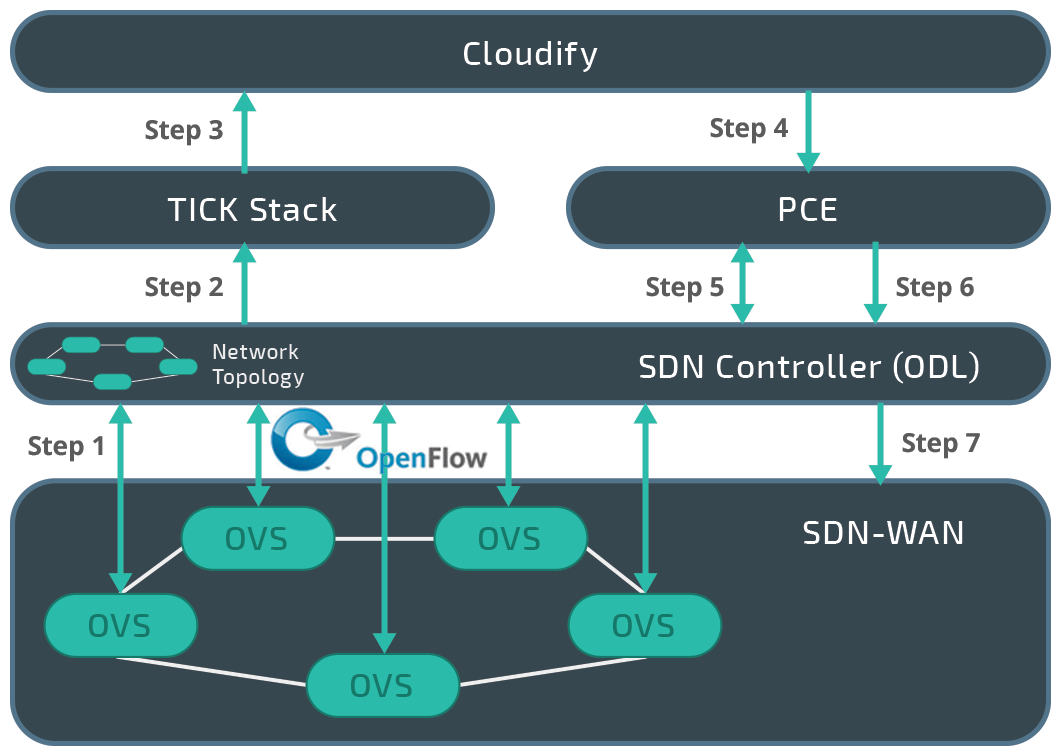
Previously, network engineers were required to provision network services and keep track of changes in real time in order to implement Network Traffic Engineering (TE). This process was all manual – until we setup a process for automated Network Traffic Engineering and Tunnelling.
The Challenge
One of our customers wanted to automate and manage their network services at the Service Orchestration level. They intended to build an orchestration platform to automate network services and remove manual processes. One of the key capabilities they are seeking to validate is the automation of network traffic engineering.
With the advent of Software Defined Networking (SDN) and its ability to provide a global view of the network, the provisioning of network services is now possible in real time. The challenge was to validate that the designed components were able to not only respond to traffic demands in real-time but also can be programmed to respond to future traffic demand.
The Aptira Solution
Aptira’s team of world-class SDN, Service Orchestration and Cloud engineers recognised the customer’s problem and were able to design a solution, using a combination of Software Defined Network (SDN) and Service Orchestration techniques.
To solve this challenge, we demonstrated how the combination of technologies such as Service Orchestration (i.e. Cloudify), SDN controller (i.e. ODL), and TICK stack can be used to implement network traffic engineering.
Aptira designed a Software Defined Networking Wide Area Network (SDN-WAN) topology and employed OpenDayLight (ODL) as an SDN controller to manage network resources. We then configured Cloudify as a Service Orchestrator (SO) to implement new service designs using TOSCA blueprints.
We designed the TOSCA blueprints in order to get updated information about the network topology based on recent updates in the network. The TOSCA blueprint triggered Cloudify to send a REST API request to OpenDayLight, querying the network topology and receiving the topology data of any changes. The TOSCA blueprint was then able to design a new network service based on these changes.
As an example of Traffic Engineering in real time, our solution performed the following steps (as shown in the figure) in a fully automated process, without human intervention:
- Step 1: SDN switches (OVSes) send an update of the network topology in certain intervals to ODL
- Step 2: The Telegraf agent (TICK stack’s module) running on the ODL detects a change in the network topology and sends an event to the TICK stack’s Policy Engine
- Step 3: This “changed topology” event in turn triggers PCE blueprint in the Cloudify Service Orchestrator
- Step 4: The PCE blueprint in Cloudify activates the path computation engine (PCE) module (developed by Aptira)
- Step 5: The PCE module asks for an update of the network topology from ODL The PCE module
- Step 6: PCE then sets up new traffic engineering path to optimize the network performance and guarantee the SLA and passes the new computed path to the SDN controller
- Step 7: The SDN controller installs new rules on the switches included in the path and removes other rules from the switches if required

This solution is self-healing, self-optimising in the case of link or network device failure. Moreover, the solution is not dependent on the SDN controller, which means any customer can adapt this solution to its production network with its own controller.
The Result
The solution was designed, implemented and tested by Aptira and configured into the evaluation platform, passing all use case scenarios devised by the customer. By automating the network traffic engineering and tunneling, this solution not only reduces manual intervention, but also reduces operational and development costs.






